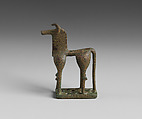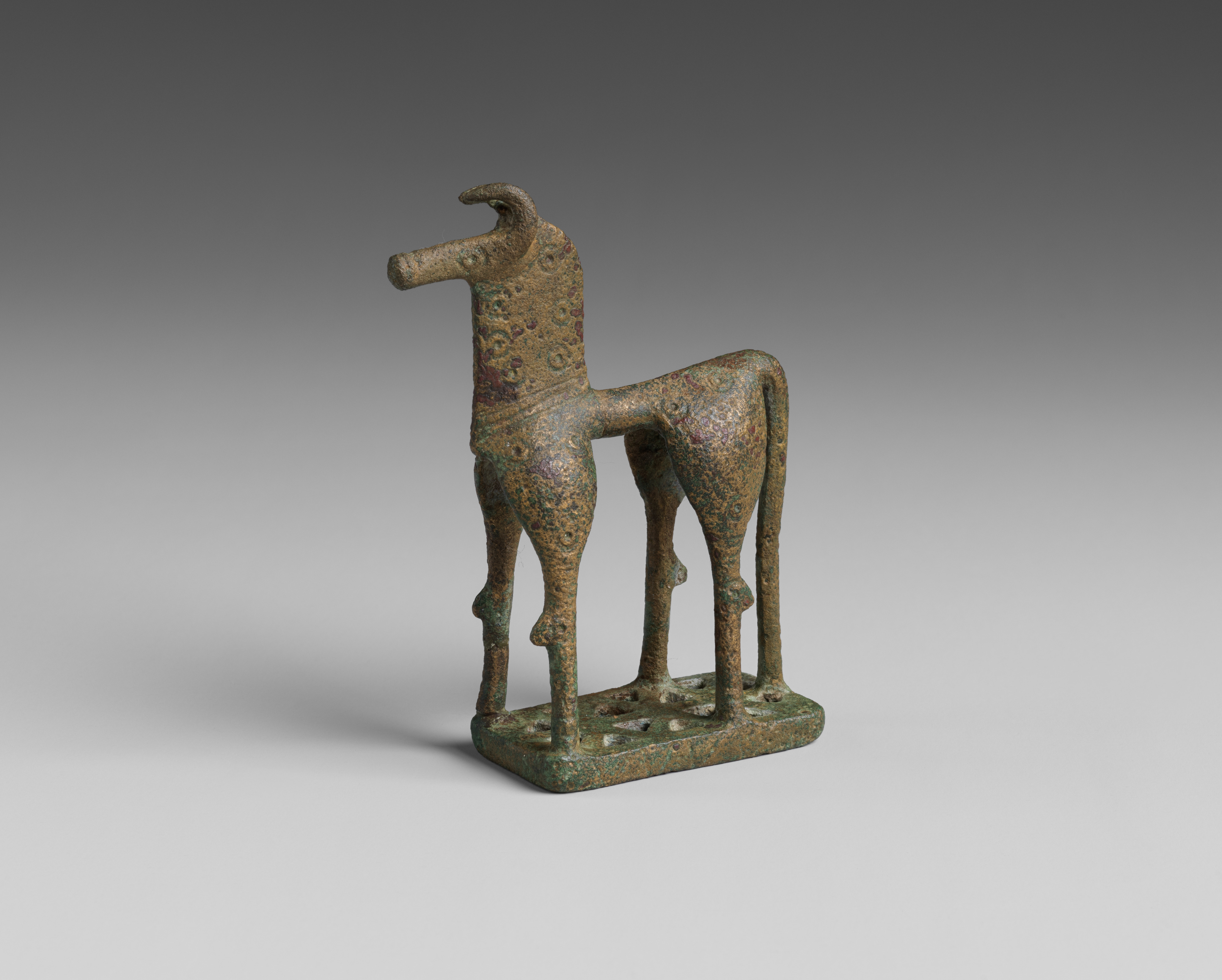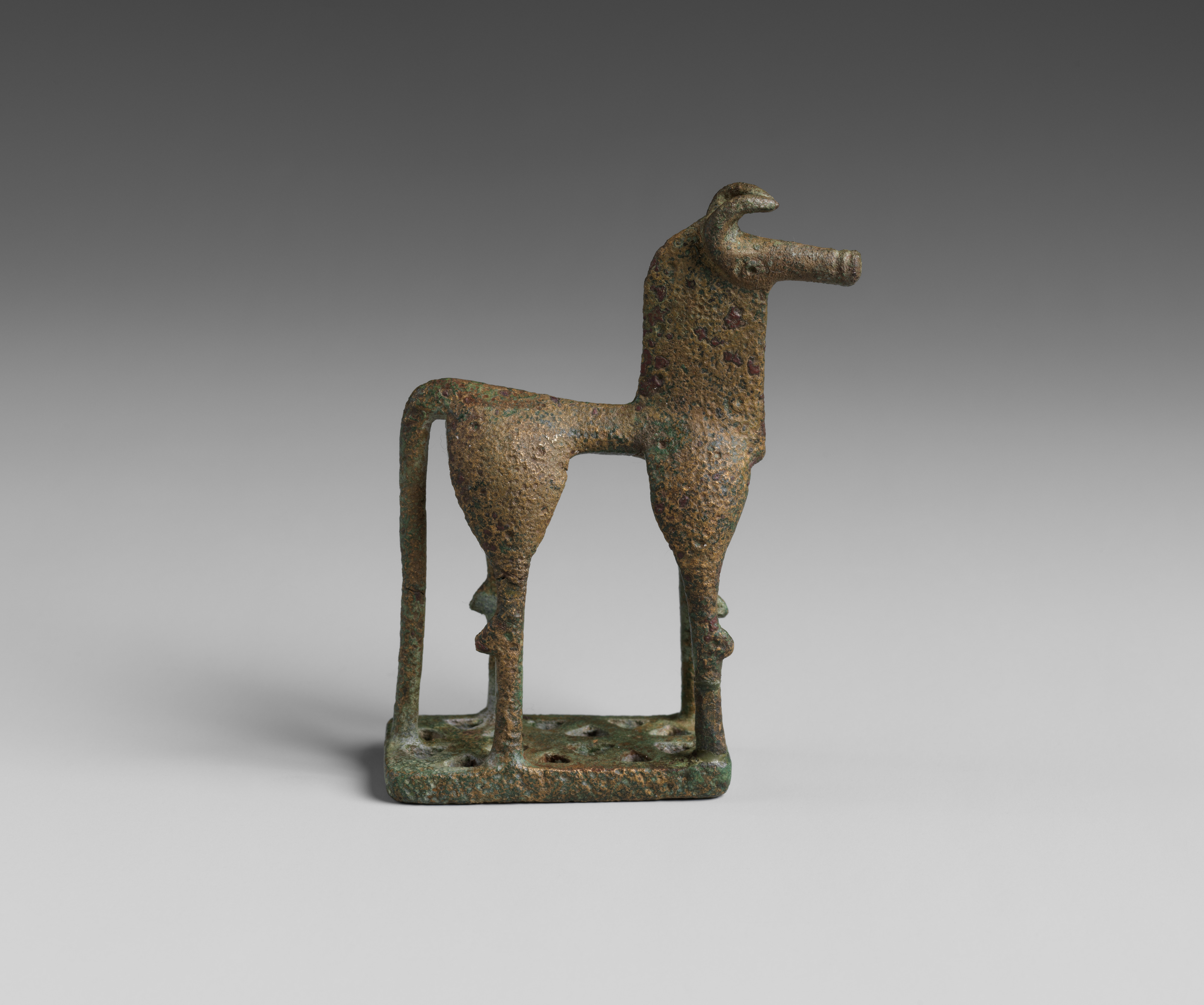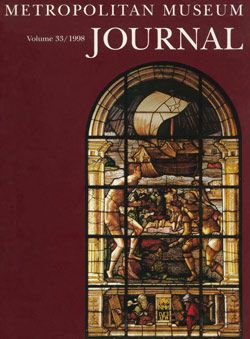Bronze horse
Solid-cast by means of the direct lost wax technique, the horse’s anatomy was reduced to its essence and depicted with geometrical shapes, following principles of symmetry and balanced proportions. The animal is fixed on a rectangular plinth with three rosettes of triangles pierced straight through. Aesthetically, this rectangular base significantly influences the three-dimensional effect of the pieces. Such bases with openwork (perhaps used as stamps) appeared after the middle of the 8th century BCE and disappeared towards the end of the Geometric period.
Thousands of early bronze horses were found in most sanctuaries of ancient Greece, especially in Olympia. They served essentially as personal offerings to the gods. This example was probably made in Corinth.
This image cannot be enlarged, viewed at full screen, or downloaded.
This artwork is meant to be viewed from right to left. Scroll left to view more.





